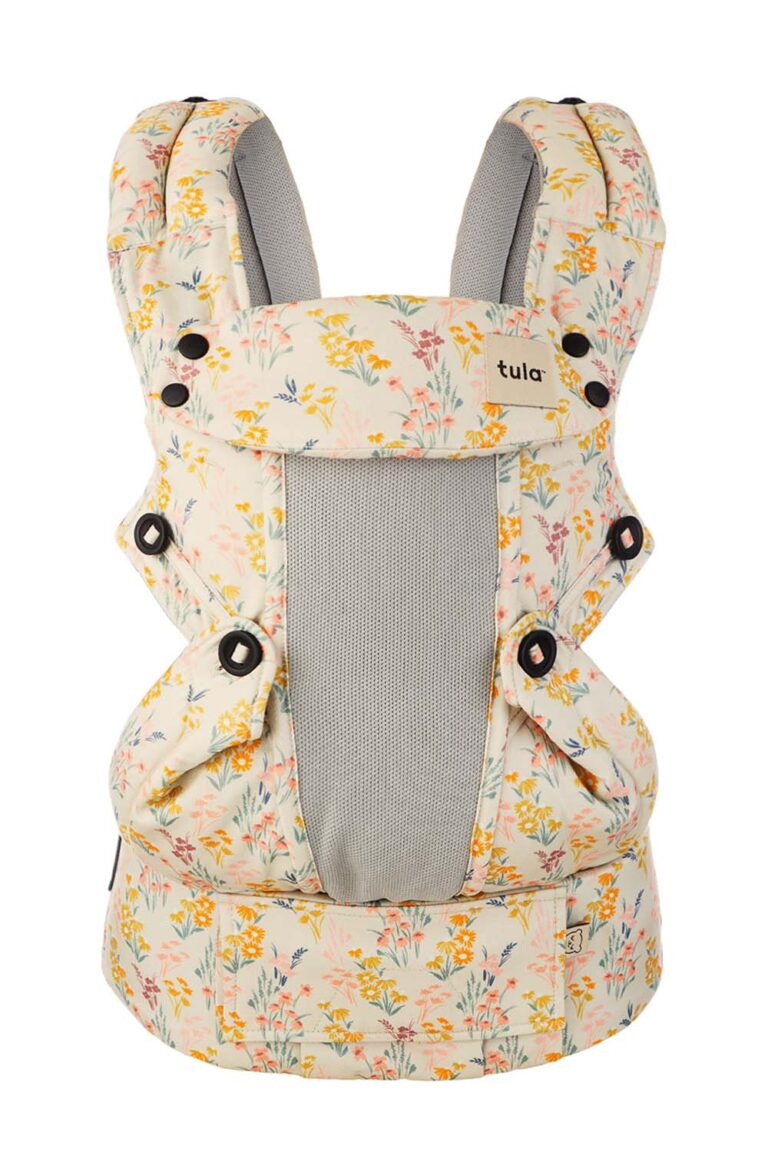How to Get Baby to Move: Say Goodbye to Uncomfortable Positions!
To get your baby to move out of an uncomfortable position, you can try a few natural methods. Firstly, you can perform a breech tilt or pelvic tilt by lying on the floor with your legs bent and feet flat on the ground.
Another option is to use gravity to your advantage by doing inversion exercises. Certain sounds and temperatures may also appeal to your baby and encourage movement. Additionally, you can try elevating your pelvis above your head or applying a cold compress to your baby’s head.
Shining a light or playing music in the desired direction may also help. Remember, these methods are natural and gentle ways to encourage your baby to change position in the womb.
Understanding Baby’s Position In The Womb
Before we dive into how to get your baby to move out of an uncomfortable position, let’s first understand why their position inside the womb is important. The way your baby is positioned can significantly impact both the pregnancy experience and the labor and delivery process. It plays a crucial role in the baby’s well-being and the overall ease of delivery.
Importance Of Baby’s Position In The Womb
The position of your baby in the womb is important for several reasons. It affects the mother’s comfort, the progression of labor, and the method of delivery. Here are a few key points to consider:
- Optimal Fetal Position: Ideally, babies should be in the head-down position, also known as the vertex position, with their head towards the birth canal. This position allows for an easier and smoother delivery.
- Natural Alignment: When the baby’s head is engaged in the pelvis, it helps their spine align with the mother’s back, providing stability during labor.
- Effect on Labor Progression: Certain positions, such as the occiput posterior (OP) or back-to-back position, can prolong labor, increase pain, and potentially lead to assisted birth methods like forceps or vacuum extraction.
- Birth Outcome: Correct positioning can reduce the likelihood of having a cesarean section or other interventions, resulting in a smoother and more successful vaginal birth.
Common Uncomfortable Positions For Babies
Babies can take various positions in the womb, and sometimes these positions can become uncomfortable for both the baby and the mother. Here are some common uncomfortable positions:
- Breech: When the baby’s buttocks or feet are positioned to be born first instead of the head, it is called a breech position. This position can make vaginal delivery more challenging and may require a cesarean section.
- Transverse: In this position, the baby lies horizontally across the mother’s abdomen, making a vaginal delivery impossible.
- Occiput Posterior (OP): Also known as the back-to-back position, the baby’s head is facing the mother’s abdomen rather than their back. This position can lead to longer and more painful labor.
Impact Of Uncomfortable Positions On Labor And Delivery
Uncomfortable positions impact the labor and delivery process in multiple ways. They can prolong labor, increase pain and discomfort for the mother, and potentially lead to the need for interventions. Here are a few things to consider:
- Prolonged Labor: Babies in breech or transverse positions may not engage in the pelvis, causing labor to stall or progress at a slower pace.
- Increased Pain: A baby in the OP position can put pressure on the mother’s spine, resulting in increased back pain during labor.
- Interventions: Uncomfortable positions may increase the need for interventions like forceps, vacuum extraction, or cesarean section.
It is essential to work towards getting your baby into a favorable position to ensure a smoother labor and delivery experience. In the next section, we will explore effective techniques and methods to help your baby move out of an uncomfortable position.
Natural Methods To Help Baby Change Position
Encourage your baby to move out of an uncomfortable position in the womb with these natural methods. Try the breech tilt or pelvic tilt by lying on the floor with your legs bent. Inversion exercises and certain sounds or temperatures may also help.
Breech Tilt Or Pelvic Tilt
Lie on the floor with your legs bent and your feet flat on the ground. This position, also known as breech tilt or pelvic tilt, helps to create more space in your pelvis and encourages the baby to move into a different position. It is a gentle and natural method that you can do at home.
Inversion Techniques
There are a few inversion techniques you can try to use gravity to help turn the baby. One technique is to bend forward and place your hands on the ground, allowing your hips to elevate above your head. Another technique is to prop your hips up using pillows while lying on your back.
Using Music To Encourage Movement
Certain sounds and music may appeal to your baby and encourage movement. Play soothing music or gentle rhythmic beats near your belly to try and stimulate the baby to change position. You can experiment with different types of music and see which ones seem to have a positive effect on your baby’s movement.
Temperature And Its Effect On Baby’s Movement
Temperature can also have an impact on your baby’s movement. Just like with music, your baby may respond to temperature changes. You can try using a warm compress on one side of your belly and a cold compress on the other side to see if the baby responds by moving towards the warmer side. However, it’s important to consult with your healthcare provider before applying any temperature changes to your belly.
Elevating Pelvis And Other Techniques
If you are looking for effective techniques to get your baby to move out of an uncomfortable position in the womb, elevating your pelvis might just do the trick. This simple method utilizes gravity to encourage your baby to reposition. By keeping your pelvis elevated above your head, you create a more favorable positioning environment for your baby.
Elevating Pelvis Technique
To try the elevating pelvis technique, follow these steps:
- Lie down on your back on a flat surface.
- Place a pillow or cushion under your hips to elevate your pelvis.
- Keep your legs bent and your feet flat on the ground.
- Relax and remain in this position for 10-15 minutes.
This technique encourages your baby to move up, away from the uncomfortable position. Remember to consult with your healthcare provider before trying any new techniques during pregnancy.
Another technique that may help in encouraging your baby to move out of an uncomfortable position is applying a cold compress to the baby’s head. The sudden change in temperature can stimulate the baby and encourage them to shift their position.
Applying Cold Compress Technique
Follow these steps to apply a cold compress to your baby’s head:
- Dampen a soft cloth or towel with cold water.
- Gently place the cold compress on your baby’s forehead or the back of their head.
- Hold the compress in place for a few minutes.
- Repeat this process a few times a day, if necessary.
Make sure to use a cold compress that is not too cold to avoid discomfort for your baby. Always prioritize your baby’s comfort and safety when trying any techniques.
In addition to elevating your pelvis and applying a cold compress, shining a light or playing music in the desired position can also be effective in encouraging your baby to move. Babies can be attracted to light and sound, and using these stimuli can help guide them to reposition.
Shining A Light Or Playing Music Technique
- Find a flashlight or a small lamp with a bright light.
- Position the light towards the area where you want your baby’s head to be.
- Alternatively, play soothing music or sounds in the desired position.
- Maintain this environment for a few minutes each day.
Remember to create a calming and comfortable environment while shining the light or playing music. Observe your baby’s response and adjust the intensity or type of stimulus accordingly.
Optimal Fetal Positioning
Optimal fetal positioning refers to the ideal position that a baby should be in the womb for a smooth and comfortable delivery. When a baby is in an uncomfortable position, such as posterior (back-to-back) position, it can lead to a longer and more painful labor, and increase the likelihood of needing a caesarean or assisted birth. Fortunately, there are various techniques and tips that can help encourage the baby to move out of an uncomfortable position and into the optimal position for birth.
Understanding Optimal Fetal Positioning
Optimal fetal positioning occurs when the baby’s head is down and facing the mother’s back. This position allows the baby’s smallest diameter (the back of the head) to align with the largest diameter of the mother’s pelvis, making it easier and more efficient for the baby to move through the birth canal. It also promotes better positioning of the baby’s spine and decreases the chance of complications during delivery.
Tips To Encourage Baby To Turn From Posterior Position
When a baby is in a posterior position, there are several techniques that can be employed to encourage them to turn into the optimal position. Here are some tips:
- Opt for gentle exercises: Light exercises, such as walking, swimming, and prenatal yoga, can help stimulate the mother’s body and encourage the baby to shift positions naturally. These movements can also create more space in the pelvis, allowing the baby to move more freely.
- Try different poses and positions: Getting on all fours, with hands parallel to the shoulders and knees parallel to the hips, can take pressure off the mother’s back and help encourage the baby to rotate. Sitting on an exercise ball or using a birthing stool can also create more room for the baby to move.
- Apply cold compress: Placing a cold compress on the baby’s head, located where you want their head to be, can stimulate them to move away from the uncomfortable position. The cool sensation can be a gentle nudge for the baby to readjust.
- Use light and sound: Shining a light or playing music near the lower abdomen can attract the baby’s attention and encourage them to shift positions. Certain sounds or melodies may appeal to the baby and motivate them to move.
- Take advantage of gravity: Inversion exercises, such as lying on an inclined surface with the pelvis elevated, can use gravity to coax the baby into a more optimal position. These exercises help create space in the pelvis and allow the baby to settle into a favorable alignment.
By incorporating these tips into your routine, you can increase the chances of your baby moving out of an uncomfortable position and into the optimal fetal position for a smoother and more comfortable delivery. Remember to always consult with your healthcare provider before attempting any techniques to ensure they are safe for you and your baby.
Additional Tips And Considerations
When it comes to getting your baby to move out of an uncomfortable position in the womb, there are several additional tips and considerations to keep in mind. These can be simple strategies that you can implement in your daily routine to help encourage your baby to change positions. Remember, it’s always important to consult with your healthcare provider before trying any new techniques or exercises.
Importance Of Regular Prenatal Check-ups
Regular prenatal check-ups are crucial throughout your pregnancy journey. These check-ups allow your healthcare provider to monitor the growth and development of your baby, as well as identify any potential issues or concerns. During these appointments, your healthcare provider will also be able to assess the position of your baby and provide advice or recommendations to help facilitate movement if needed. Additionally, regular check-ups help ensure your overall health and well-being.
Consulting With Healthcare Provider
Your healthcare provider is your best resource when it comes to guiding you on techniques to encourage your baby to move. Consulting with your healthcare provider will help you gain expert advice tailored specifically to your pregnancy. They can provide personalized recommendations based on your baby’s position, your medical history, and any unique circumstances you may have. Always reach out to your healthcare provider if you have any concerns or questions regarding your baby’s position.
Gentle Exercises To Encourage Movement
Gentle exercises can be a great way to promote movement and potentially encourage your baby to shift positions. It’s important to note that these exercises should be done with caution and only after consulting with your healthcare provider. Some gentle exercises to try include pelvic tilts, cat-cow poses, and gentle rocking motions. These movements can help create space for your baby to move around and find a more comfortable position.
Maintaining A Healthy Lifestyle For Baby’s Comfort
Maintaining a healthy lifestyle during pregnancy is important for both you and your baby’s well-being. By prioritizing a nutritious diet, regular exercise, and adequate rest, you can create an environment that supports your baby’s comfort and encourages movement. A healthy lifestyle also includes managing stress levels and avoiding activities or situations that may be potentially hazardous for your baby. Remember to always follow the guidance of your healthcare provider to ensure the best possible outcome for you and your baby.

Credit: www.ehproject.org
Frequently Asked Questions For How To Get Baby To Move Out Of Uncomfortable Position
How Can I Help My Baby Change Position In The Womb?
To help your baby change position in the womb: 1. Try the breech tilt or pelvic tilt by lying on the floor with bent legs. 2. Use gravity to your advantage with inversion exercises. 3. Certain sounds or temperature changes may stir your baby’s movement.
Which Baby Position Is Most Uncomfortable?
Babies in an occiput posterior (back-to-back position) in the womb can be uncomfortable. Labor may be longer, more painful, and may require a caesarean or assisted birth. Supporting natural methods like breech tilt, inversion, music, and temperature changes can encourage the baby to change position.
How Can I Get My Baby To Move Up From My Pelvis?
To help your baby move from your pelvic area, try these natural methods: 1. Breech tilt or pelvic tilt: Lie on the floor with bent legs and feet flat on the ground. 2. Inversion: Use gravity by doing certain moves.
3. Music: Certain sounds may appeal to your baby. 4. Temperature: Your baby may respond to temperature changes. Additionally, elevate your pelvis above your head, apply a cold compress to your baby’s head, and use light or music to guide their movement.
How Can I Help My Baby Turn From Posterior Position?
To help your baby turn from a posterior position, try the following natural methods. Firstly, try doing a breech or pelvic tilt by lying on the floor with your legs bent and feet flat on the ground. Secondly, use gravity to your advantage by doing inversions or specific moves.
Additionally, certain sounds or temperature changes may appeal to your baby and encourage movement.
Conclusion
Incorporating simple and natural techniques, you can help your baby move out of an uncomfortable position in the womb. Light exercise, specific poses, gentle pokes and prods, and even talking and singing can encourage your baby to shift positions. Additionally, applying a cold compress or shining a light on your baby’s desired position may provide motivation for movement.
By employing these methods, you can increase comfort for both you and your little one during the pregnancy journey.







